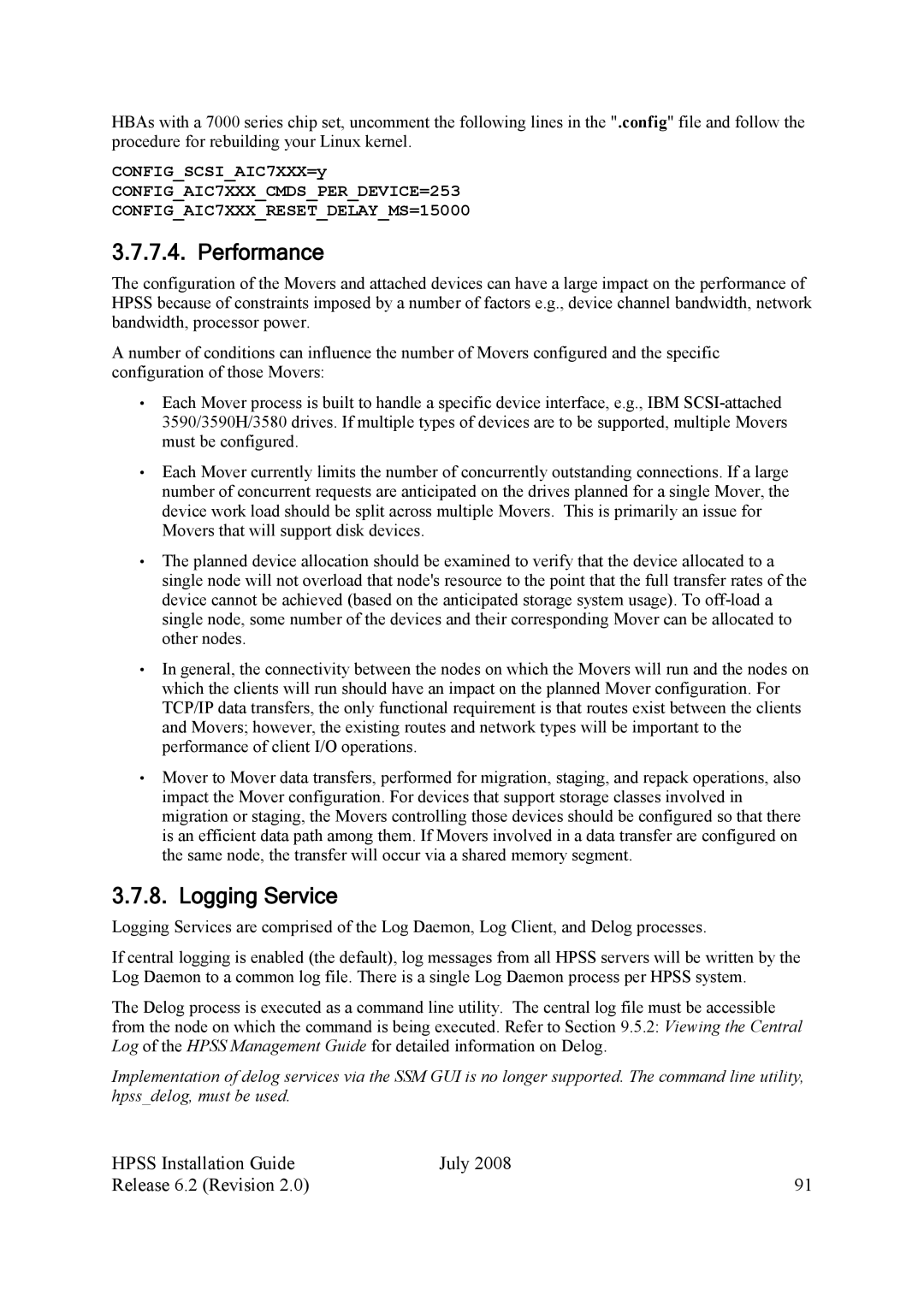HBAs with a 7000 series chip set, uncomment the following lines in the ".config" file and follow the procedure for rebuilding your Linux kernel.
CONFIG_SCSI_AIC7XXX=y
CONFIG_AIC7XXX_CMDS_PER_DEVICE=253
CONFIG_AIC7XXX_RESET_DELAY_MS=15000
3.7.7.4. Performance
The configuration of the Movers and attached devices can have a large impact on the performance of HPSS because of constraints imposed by a number of factors e.g., device channel bandwidth, network bandwidth, processor power.
A number of conditions can influence the number of Movers configured and the specific configuration of those Movers:
•Each Mover process is built to handle a specific device interface, e.g., IBM
•Each Mover currently limits the number of concurrently outstanding connections. If a large number of concurrent requests are anticipated on the drives planned for a single Mover, the device work load should be split across multiple Movers. This is primarily an issue for Movers that will support disk devices.
•The planned device allocation should be examined to verify that the device allocated to a single node will not overload that node's resource to the point that the full transfer rates of the device cannot be achieved (based on the anticipated storage system usage). To
•In general, the connectivity between the nodes on which the Movers will run and the nodes on which the clients will run should have an impact on the planned Mover configuration. For TCP/IP data transfers, the only functional requirement is that routes exist between the clients and Movers; however, the existing routes and network types will be important to the performance of client I/O operations.
•Mover to Mover data transfers, performed for migration, staging, and repack operations, also impact the Mover configuration. For devices that support storage classes involved in migration or staging, the Movers controlling those devices should be configured so that there is an efficient data path among them. If Movers involved in a data transfer are configured on the same node, the transfer will occur via a shared memory segment.
3.7.8. Logging Service
Logging Services are comprised of the Log Daemon, Log Client, and Delog processes.
If central logging is enabled (the default), log messages from all HPSS servers will be written by the Log Daemon to a common log file. There is a single Log Daemon process per HPSS system.
The Delog process is executed as a command line utility. The central log file must be accessible from the node on which the command is being executed. Refer to Section 9.5.2: Viewing the Central Log of the HPSS Management Guide for detailed information on Delog.
Implementation of delog services via the SSM GUI is no longer supported. The command line utility, hpss_delog, must be used.
HPSS Installation Guide | July 2008 |
Release 6.2 (Revision 2.0) | 91 |
